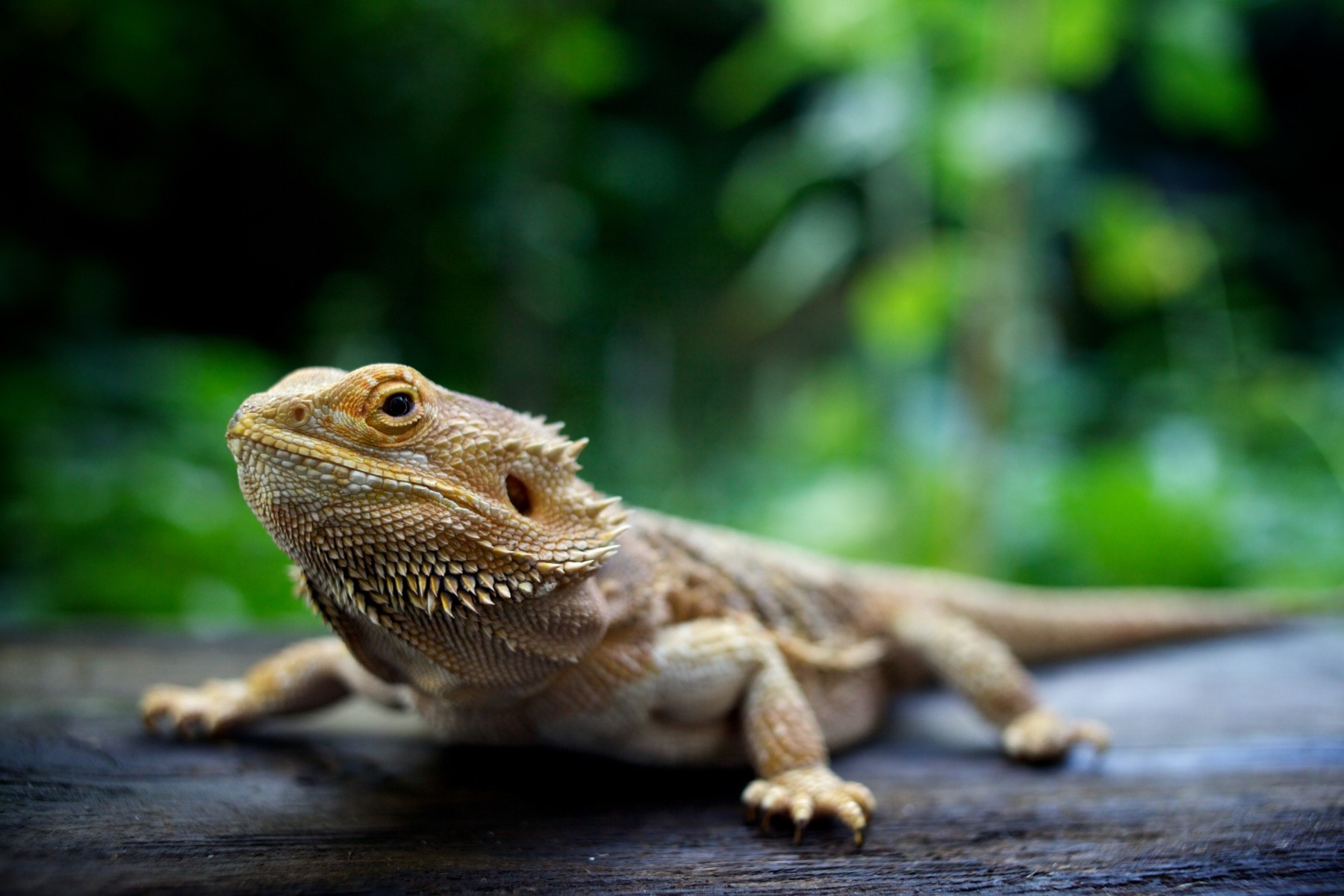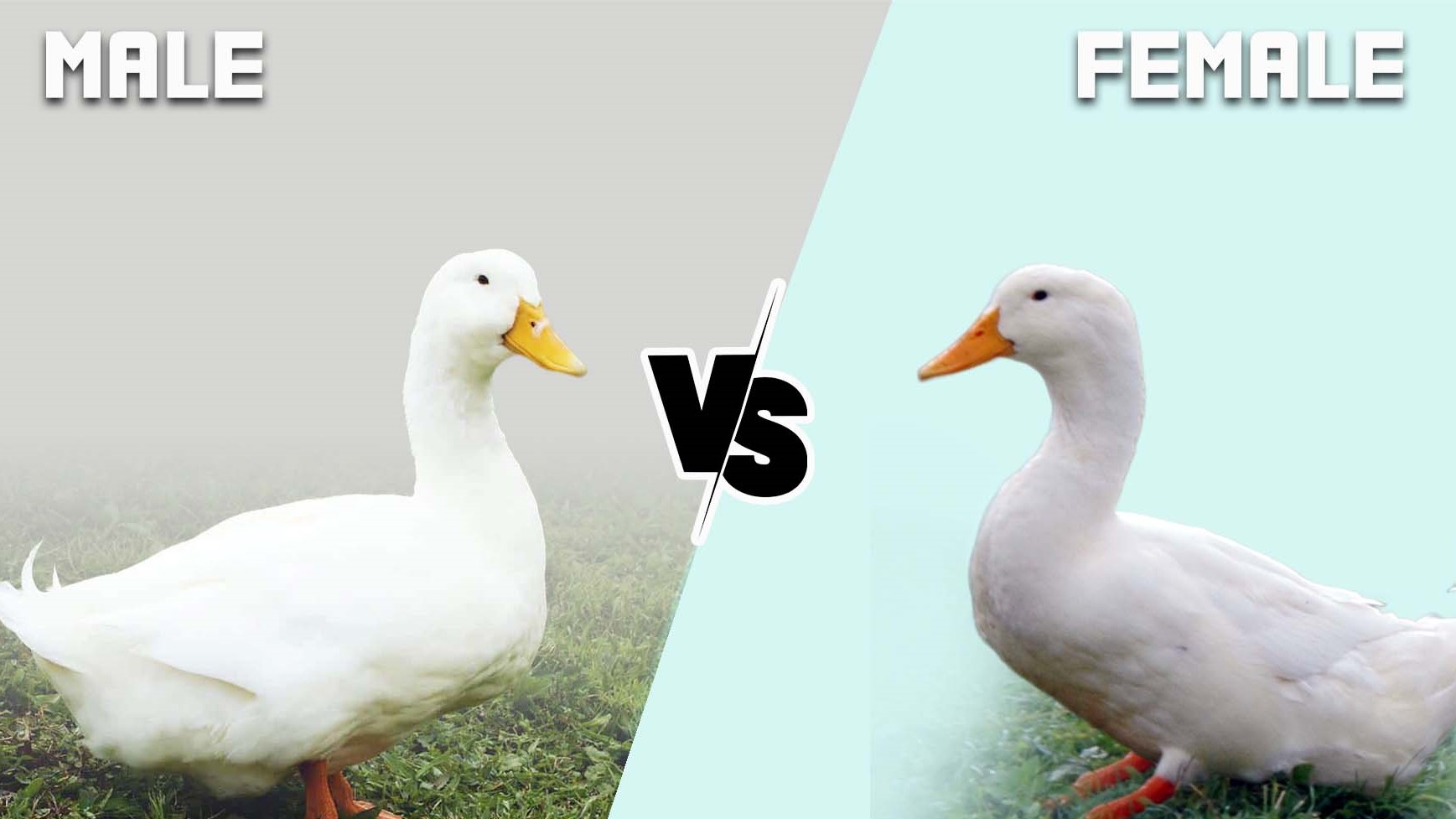Home>Pets & Animals>How To Tell If Bearded Dragon Is Male Or Female


Pets & Animals
How To Tell If Bearded Dragon Is Male Or Female
Published: March 7, 2024
Learn how to determine the gender of your bearded dragon with our expert guide. Discover the key differences between male and female bearded dragons. Perfect for pet owners and animal enthusiasts.
(Many of the links in this article redirect to a specific reviewed product. Your purchase of these products through affiliate links helps to generate commission for Noodls.com, at no extra cost. Learn more)
Table of Contents
Introduction
Bearded dragons, known for their docile nature and captivating appearance, are popular reptile pets among enthusiasts. Understanding the gender differences in bearded dragons is essential for their proper care and well-being. Whether you're a seasoned reptile keeper or a novice enthusiast, being able to discern the sex of these fascinating creatures is a valuable skill.
In this comprehensive guide, we will delve into the physical and behavioral characteristics that distinguish male and female bearded dragons. By the end of this article, you will be equipped with the knowledge to confidently determine the sex of these reptiles. Whether you're considering breeding, seeking compatible tank mates, or simply want to understand your pet better, this information will prove invaluable.
So, let's embark on this enlightening journey to unravel the mysteries of bearded dragon gender identification. Get ready to explore the subtle yet distinctive features and behaviors that set male and female bearded dragons apart. By the time you finish reading, you'll be well-versed in the art of discerning the sex of these remarkable reptiles.
Read more: How To Tell If A Turtle Is Male Or Female
Physical Characteristics of Male Bearded Dragons
Male bearded dragons exhibit several physical traits that distinguish them from their female counterparts. Understanding these characteristics is crucial for accurately determining the sex of these reptiles. Here are the key physical attributes of male bearded dragons:
-
Larger Size: Mature male bearded dragons are generally larger in size compared to females. They have broader heads, thicker necks, and overall bulkier bodies. This size disparity becomes more pronounced as the dragons reach sexual maturity.
-
Pore Size and Coloration: Male bearded dragons possess larger femoral pores on the underside of their thighs. These pores, which appear as small dots, are more prominent and can be seen as a darkened area. Additionally, during the breeding season, the pores may exude a waxy substance, further indicating the male gender.
-
Preanal Pores: Another distinguishing feature of male bearded dragons is the presence of preanal pores. These are located on the underside of the tail, just before the vent. These pores are used for releasing pheromones and are typically more noticeable in mature males.
-
Hemipenal Bulges: Male bearded dragons have noticeable hemipenal bulges at the base of their tails. These bulges, which appear as two distinct lumps, indicate the presence of hemipenes, the male reproductive organs. While these bulges may not be as prominent in younger males, they become more evident as the dragons mature.
-
Head Bobbing and Coloration: During courtship and territorial displays, male bearded dragons often exhibit head bobbing behavior. This rhythmic movement, accompanied by the darkening of their beard and body, is a distinct characteristic of male dragons. The intensity of coloration and head bobbing tends to increase during mating rituals.
Understanding these physical characteristics is essential for accurately identifying the gender of a bearded dragon. By familiarizing yourself with these traits, you can confidently determine whether your pet is a male or female, enabling you to provide tailored care and understand their unique behaviors.
Physical Characteristics of Female Bearded Dragons
Female bearded dragons possess distinct physical traits that set them apart from their male counterparts. Understanding these characteristics is crucial for accurately determining the sex of these remarkable reptiles. Here are the key physical attributes of female bearded dragons:
-
Smaller Size: Mature female bearded dragons are generally smaller and more slender compared to males. They have relatively smaller heads, thinner necks, and overall sleeker bodies. This size difference becomes more noticeable as the dragons reach sexual maturity.
-
Femoral Pores: Unlike males, female bearded dragons have smaller and fewer femoral pores on the underside of their thighs. These pores are less prominent and appear as small, pale dots. Unlike males, females do not exude a waxy substance from these pores, providing a clear distinction between the genders.
-
Absence of Preanal Pores: One of the key indicators of female bearded dragons is the absence of preanal pores. Unlike males, females do not have these pores on the underside of their tails, making this a reliable characteristic for sex differentiation.
-
Lack of Hemipenal Bulges: Female bearded dragons do not have hemipenal bulges at the base of their tails, unlike their male counterparts. The absence of these bulges is a definitive feature that distinguishes female dragons.
-
Coloration and Behavior: While both male and female bearded dragons display color changes, females may exhibit lighter coloration during certain periods, especially when gravid (carrying eggs). Additionally, females may show nesting behavior, such as digging and rearranging substrate, as they prepare to lay eggs.
Understanding these physical characteristics is essential for accurately identifying the gender of a bearded dragon. By familiarizing yourself with these traits, you can confidently determine whether your pet is a male or female, enabling you to provide tailored care and understand their unique behaviors.
Behavioral Differences Between Male and Female Bearded Dragons
Understanding the behavioral disparities between male and female bearded dragons is pivotal in accurately discerning their gender. These differences manifest in various aspects of their interactions, territorial behaviors, and responses to environmental stimuli. By observing these behavioral cues, reptile enthusiasts can gain valuable insights into the gender of their bearded dragons. Here are the key behavioral differences to consider:
Male Bearded Dragons:
- Territorial Displays: Male bearded dragons are known for their territorial nature, often displaying aggression towards other males. They may engage in head bobbing, arm waving, and beard darkening as a means of asserting dominance and defending their territory. These displays are particularly prominent during the breeding season and when encountering other males.
- Courtship Behavior: When in the presence of a female, male bearded dragons exhibit courtship behavior characterized by head bobbing, circling, and gentle nudging. This behavior is part of their mating ritual and is aimed at attracting a receptive female for breeding.
- Aggressive Tendencies: During mating season, male bearded dragons may become more aggressive, especially when competing for the attention of a female. This heightened aggression is a notable behavioral trait that distinguishes males during the breeding period.
Female Bearded Dragons:
- Nesting Behavior: Female bearded dragons display nesting behavior, especially when gravid (carrying eggs). This behavior includes digging in the substrate, rearranging bedding materials, and creating a suitable nesting site. These actions indicate the female's preparation for laying eggs and are a distinctive behavioral trait.
- Submissive Posture: In the presence of dominant males or during courtship displays, female bearded dragons may assume a submissive posture, characterized by flattening their bodies and avoiding direct confrontation. This behavior is a response to the dominant displays of males and serves to mitigate potential aggression.
- Gravid Coloration: When carrying eggs, female bearded dragons may exhibit changes in coloration, appearing slightly darker or showing patterns associated with gravidity. These color changes are a notable behavioral indicator of the female's reproductive status.
By recognizing these behavioral differences, reptile enthusiasts can gain a deeper understanding of their bearded dragons' gender and reproductive behaviors. This knowledge is invaluable for providing appropriate care, facilitating breeding efforts, and fostering a harmonious environment for these captivating reptiles.
How to Determine the Sex of a Bearded Dragon
Accurately determining the sex of a bearded dragon is essential for various reasons, including understanding their unique care requirements, facilitating breeding efforts, and ensuring compatibility within a multi-dragon habitat. While discerning the gender of these reptiles may seem daunting to the uninitiated, it can be achieved through a combination of careful observation and knowledge of their physical and behavioral characteristics.
To begin the process of sex determination, it is crucial to observe the physical traits that differentiate male and female bearded dragons. One of the most reliable indicators is the size disparity between the two genders. Mature male bearded dragons typically exhibit larger body size, broader heads, and thicker necks compared to females. Conversely, female dragons are generally smaller and more slender, with relatively smaller heads and sleeker bodies.
Another key physical characteristic to consider is the presence of femoral pores. Male bearded dragons possess larger femoral pores on the underside of their thighs, which appear as darkened areas and may exude a waxy substance during the breeding season. In contrast, female dragons have smaller and fewer femoral pores, which are less prominent and do not exude any substance.
Additionally, the presence or absence of preanal pores is a crucial factor in sex determination. Male bearded dragons have noticeable preanal pores located on the underside of their tails, just before the vent, while females lack these pores entirely. Furthermore, the presence of hemipenal bulges at the base of the tail is a definitive feature of male dragons, indicating the presence of hemipenes, the male reproductive organs.
In addition to physical characteristics, observing behavioral differences between male and female bearded dragons can aid in sex determination. Male dragons often display territorial behaviors, including head bobbing and aggression towards other males, especially during the breeding season. On the other hand, female dragons may exhibit nesting behavior, such as digging and rearranging substrate, particularly when gravid.
By combining these physical and behavioral observations, reptile enthusiasts can confidently determine the sex of their bearded dragons. This knowledge empowers them to provide tailored care, create harmonious living environments, and make informed decisions regarding breeding and reproductive health. Understanding the intricacies of bearded dragon gender identification enhances the overall welfare and well-being of these captivating reptiles.














